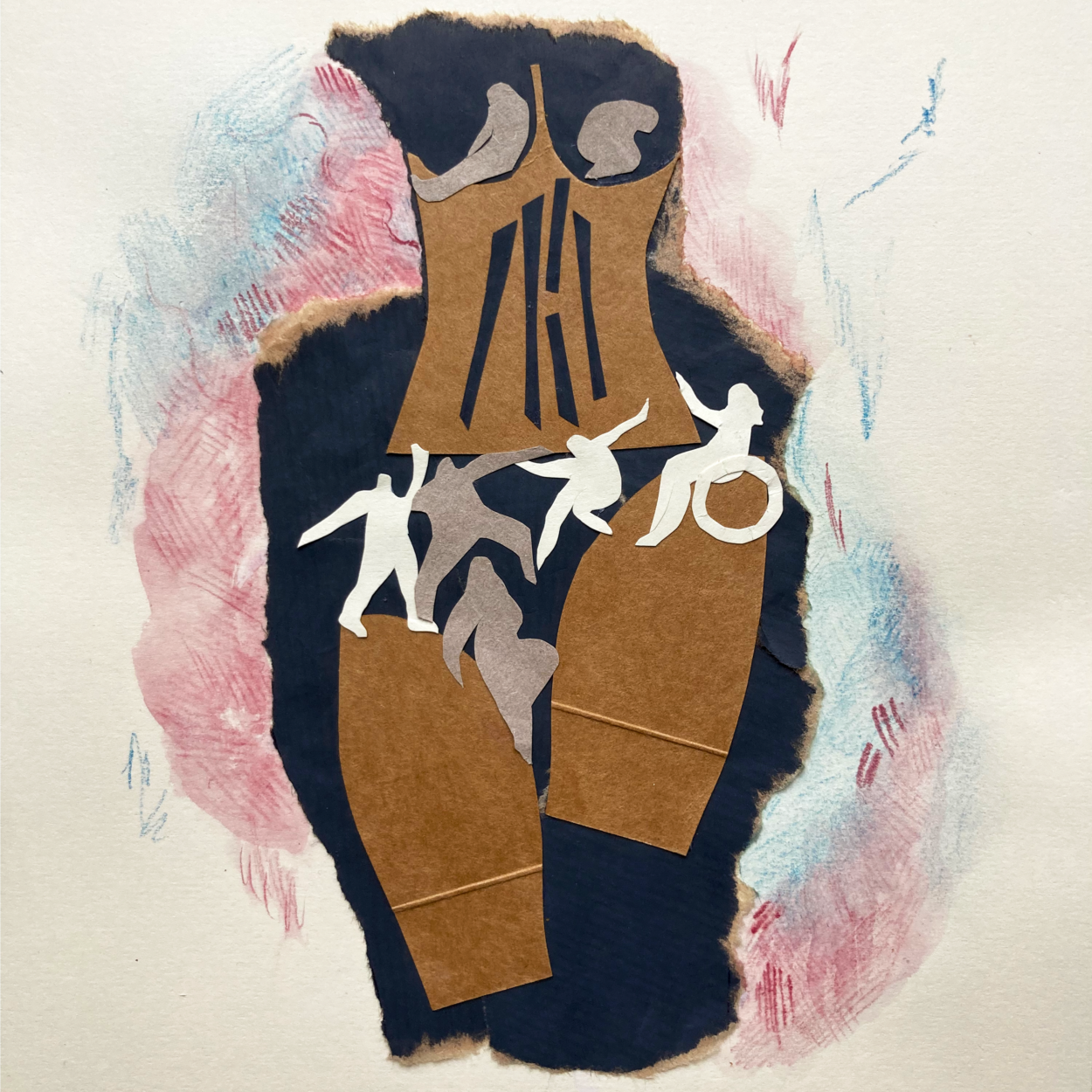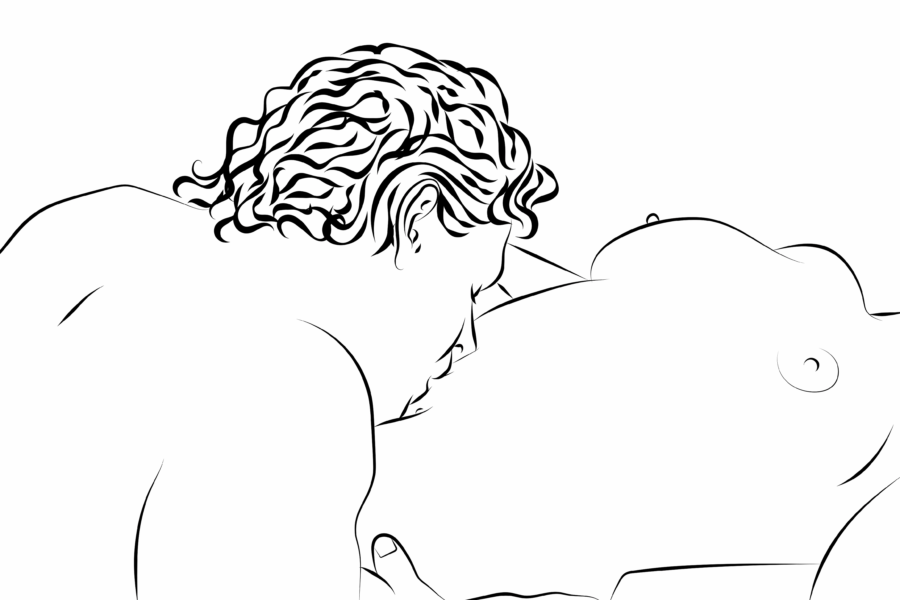CW = Sexual Violence, Misogyny, Body Image
In the final throes of my Masters degree in Gender Studies, I have been watching a lot of porn. As an aspiring sex educator with a background in film studies, the research for my thesis has gradually gravitated towards a focus on porn studies. Now, I know what you’re thinking, but alas – hours upon hours of porn consumption has not been the kind of cop-out “research” that it might sound to be.
Since porn has evolved into a distinctly digital discourse, it has become the elephant in the room – the hot topic (and hot topic) that sits on the tip of our tongues – swallowed by shame and stigma. Even as a markedly sex-positive person who is pretty comfortable talking about all things sex, before starting research on my thesis, I found myself to be embarrassed about talking about porn and my own consumption of it.
Have you ever caught yourself, post-orgasm, snapped out of the fantasy fun-land of the porn you were watching? The arousal subsides, and all of a sudden you find yourself, legs splayed, watching something that – as a feminist – makes you feel a little…wrong? I know I certainly have. Case in point. I might not necessarily feel abashed about the act of consuming and utilising porn for masturbatory means – I mean, what is there to feel more proud of than getting yourself off – but I do, however, feel an acute sense of moral discomfort surrounding the violence embedded in the videos I am streaming.
“Violence” in the context of porn has often been defined by the ‘rough sex’ practices depicted on-screen which porn studies scholars have connected with violent sexual practices in ‘real life’ intimacy. Indeed, there is a growing body of work that draws a direct connection between porn consumption and the sexual victimisation of women. With the blatant lack of teaching provisions in educational settings in the UK on the topic of sex and relationships, it is unsurprising that teens (and adults!) turn to porn not only to ‘get off’, but also to learn how to have sex. The imagery through which porn “teaches” is generally objectifying, violent, and oppressive, presenting the unwitting viewer with a complex and problematic representation of sex, sexual conduct, and body image. For me, it is not only the physical aggression present in this imagery that constitutes the violence of porn but also the exclusions within porn. Indeed, what is not shown in these clips and specifically the bodies excluded from porn, are perhaps just as actively violent as the aggressive practices included in the content.
A report from 2020 found that 29% of UK-based 11-17-year-olds felt bad about their bodies when they saw how people looked in porn. That’s almost one in three. One in three teenagers left with a lingering sense of inadequacy and discontent with the way that they look. One in three facing a concern over their sexual attractiveness. One in three questioning their desirability through bodily comparison. As if puberty and sexual development weren’t challenging enough, the accessibility of online porn and social media in 2023 means that today’s teens are being exposed to highly performative, exclusionary, and unrealistic representations of sex and the body. Whether plummeting down the rabbit hole of hard-core pornography (which ultimately just takes a few clicks) or scrolling through Instagram, the focus on the sexualised body consumes us. Where porn (inevitably) intersects with capitalism, these images of bodily desirability become consumable, and merge to program our minds into conceptualising the ‘perfected’ sexual body as a symbol of worth.
When thinking about porn from popular sites such as Pornhub in this context, the role of “woman” undergoes a particular series of complex and obstructive systems of oppression. Through the lens of the pornographic (male) gaze, the female body is expected to be at once curvy and skinny, large-breasted and perky, seductive but not “slutty”. She becomes the object, the toy, the vessel through which the – often invisible – male derives his pleasure. Her body becomes the centre of voyeuristic hedonism. It is her that we watch, and thus it is her that ultimately becomes heralded as the image of “sex” itself. This perfected “she” depicts such a fragmentary snapshot of female corporeality. Slim, cisgender, white, hairless, able-bodied and young, labia-less and passive, this ‘porn star’ beauty poses such an extreme and ultimately niche depiction of feminine beauty, but one which ultimately becomes the image by which we judge ourselves. If we are learning from the porn that we are watching then, it is no surprise that we are learning that “sexy” is an inherently exclusionary domain reserved for a very limited percentage of people.
So then, where do the rest of us fit? Though I’m sure some can associate with the body of the ‘porn star beauty’, many of us are left with a feeling of uncomfortable exclusion when watching porn, finding our own bodies absent from the “popular” videos on Pornhub’s homepage. Naturally, there do exist categories for “fat”, “hairy”, “trans”, “POC”, “disabled”, “mature” (etc.) bodies on these sites, but this very practice of categorising bodies into reductive boxes reaffirms this idea that anyone who does not fit the tight mould of pornified beauty exists instead as fetishised ‘Other’. This is, in itself, an act of violence. Once again, porn and capitalism collide to produce (and reproduce) the images of “sex that sells”, projecting the patriarchal lens onto the female body, and forcing the “unconventional” beauty of ‘Other’ into tight and restrictive categories which exist distinctly from the pornographic norm. We are encouraged to conceive of the female body as either object or ‘Other’, or in many cases, both, therefore stripping female sexuality down to the very reductive idea that pornified beauty equals worth. The bodies which exist outside of these boundaries are ultimately presented as objects to be used and abused. Simultaneously sexualised and degraded through pornographic representation, the female ‘Other’ is positioned as a more concretely ‘taboo’ aspect of sexuality than even the most extreme physical violence.
Crucially, I am in no way saying that I think porn is inherently “bad”, (hell, I’m sure I’ve consumed more than most!) nor am I in any way positing that the problems of porn can be attributed to the sex workers involved in pornographic production. Where a huge number of porn studies scholars have directly commented on the production of porn itself as a problematic reification of gendered norms and violence, I think that porn, in reality, functions as a predictable and palpable reflection of the patriarchy itself. Porn depicts the extremes of sexual objectification, bodily exclusion, and misogynistic conduct. However, if we turn to look at visual media which exists outside of the world of porn (think cinema, TV, or advertisement), it is clear to see that these issues of gendered bodily oppression/expectation pervade the world of visual digitality both subtly and directly.
Evading and escaping the male gaze – since the birth of the internet in particular – has, then, become a very challenging endeavour. The female body exists in an oppressive and unrelenting vacuum. Whether or not you fit the mould of pornified ‘perfection’, the fetishistic and sexualising lens of the male gaze in contemporary Western culture means that you will ultimately be met, at some point in your life, with a sense of discontent over your own sexual embodiment. However, the more that we talk about these issues, the more that we simplify the male gaze to unveil its absurdity, the more that we take our sexuality into our own hands, the more unified power we will hold. Pornified “perfection” does not equate to worth, and your enjoyment of your sexual (or non-sexual) self is yours.
Porn can be an exciting personal escapade into the world of sex, allowing us to explore our fantasies and learn about what makes us tick. Porn can be an opportunity for sexual self-indulgence and discovery, an opportunity to connect with your own body in your own time. Or, indeed, porn can be a fun way to play with a partner (or partners), whether consuming or producing, allowing you to indulge in sexual fantasies together. However, what is crucial to remember is that porn is ultimately fiction. Even in the most low-fi “homemade” iterations, porn ultimately functions as a form of entertainment that operates explicitly through the pornographic, capitalistic lens of the male gaze. The bodies of porn, and the sexual practices presented on-screen are performances, and are not signifiers of value.
Let this serve as a reminder then, that whatever you look like, however you exist in your body, you are sexy, you are beautiful, and more importantly, you are worthy.
Article by Sophie Somerville, Sex and relationships writer





Leave a Comment